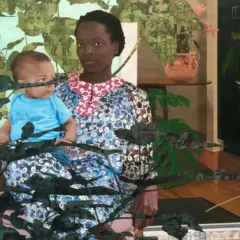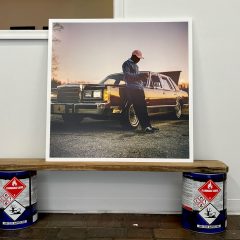(Roberta goes to New York and sees a bunch of good things –the Artblog editors)
It’s always good to have a list, and between mine, Steve’s and my sister Cate’s, we saw a lot last weekend. Much of it was good but there were some things we rolled our eyes at, and of course we only scratched the surface of the huge basket of goodies that is New York. We also met up with friends, Chuck and Iris, saw a play and heard jazz.
Grey Art Gallery
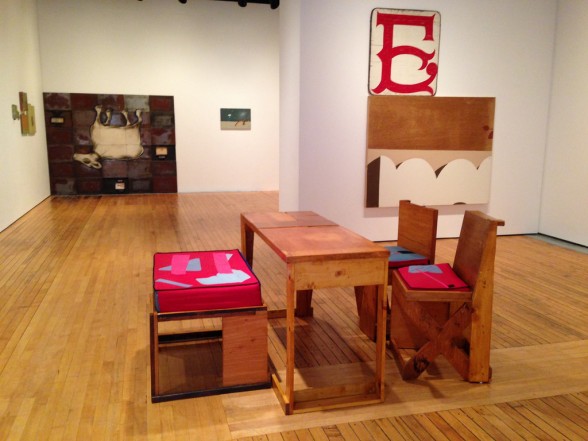
Cate’s list brought us to the big show Energy That is All Around, at Grey Art Gallery, a show about the 1990s art of Bay Area “Mission School” artists Chris Johanson, Margaret Kilgallen, Alicia McCarthy, Barry McGee, and Ruby Neri. Steve and I spent a good long time looking at the massive group show, struck by the uncanny aesthetic coherence among the five artists.

Schools are probably named, if not created, by commentators looking to group people in a moment in time. And while these artists in the Mission School knew each other (McGee, McCarthy, and Neri all went to the San Francisco Art Institute at around the same time) and they all lived in the Mission district in the 1990s, the slim but chock-full-of information catalog tells you they weren’t a “school” back then or a collective or cooperative. Nevertheless, they were of very like minds in their expression of thoughts about class, community, politics, gentrification, sexism, capitalism, the street — and about materials for art-making. Call them Mission Imagists. They expressed themselves through imagery (not abstraction) and with materials filled with low brow panache — dumpster-dived scrap wood, bottles and other objects used as the ground for paint and, in fact, leftover house paint, in colors that skewed to the secondary, giving the overall affect of sadness and sorrow. With their materials and self-made aesthetics, what the show resembles most is a group exhibit of outsider or self-taught artists, which is the closest thing the Mission School suggests — a collective aesthetic of those who are outside of the art system, in spite of being trained (Johanson is the only one who is self-taught).
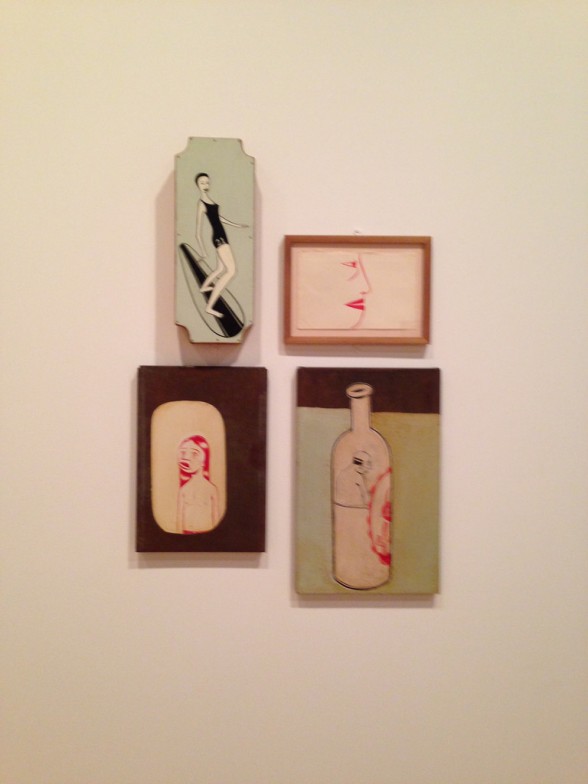
Steve is interested in the idea of Design and I tried to tell him that this was a kind of low brow Design aesthetic that has spread across the country and was and is still wildly influential on young artists outside the Bay area. The founders of Space 1026, including Andrew Jeffrey Wright, Ben Woodward, Adam Wallacavage and Jeff Weisner, who collectivized in 1997, embrace the street aesthetic, with comics, graffiti and anti-corporate messages, and if they were not influenced by McGee and the Mission School, then certainly they were in solidarity with it.
In fact, right now you can see an example of the Bay Area/Philadelphia connection at Fleisher-Ollman Gallery in the show Department of Neighborhood Services, which pairs Space 1026 alumnus Isaac T. Lin and MegaWords’ co-founder Dan Murphy with Barry McGee, in a show organized by F-O Director, Alex Baker. (See Evan Paul Laudenslager’s review here. And here is Annette Monnier’s wonderful interview with Dan Murphy of a few years back.)
Baker, it should be noted, curated a wonderful Bi-coastal show at ICA in 2001 that included Margaret Kilgallen, Chris Johanson and Scott Hewicker as well as Philadelphia artists artists Joy Feasley, Jim Houser and Clare Rojas. The massive show included sprawling wall paintings and an aesthetic that I called populist, when I reviewed it for Philadelphia Weekly.
Back to Grey Art Gallery,… The show, organized by the San Francisco Art Institute, includes almost 100 works and several glass vitrines stuffed with memorabilia. Many of the works are hung in wall ensembles which subsume the artists’ individuality under the stronger, pervading aesthetic, having in part to do with the downbeat colors from the found, leftover house paint.
While her works are in a couple of the wall ensembles, Margaret Kilgallen, who died prematurely in 2001, stands out with her flat, stylized aesthetic that is fashion- and street-wise. Chris Johanson’s word-peppered art with awkwardly-drawn figures talking to each other in thought bubbles reminds me of Raymond Pettibon. As with that (also) West Coast artist, Johanson’s works seem angry and forlorn, although Pettibon rails against the cosmos and Johanson’s hate is more directed — at developers. His piece, The Survivalists, 1999, is a cartoon melange about dispossessed people forced to leave their homes while others come in oohing and aahing over their newly developed digs.
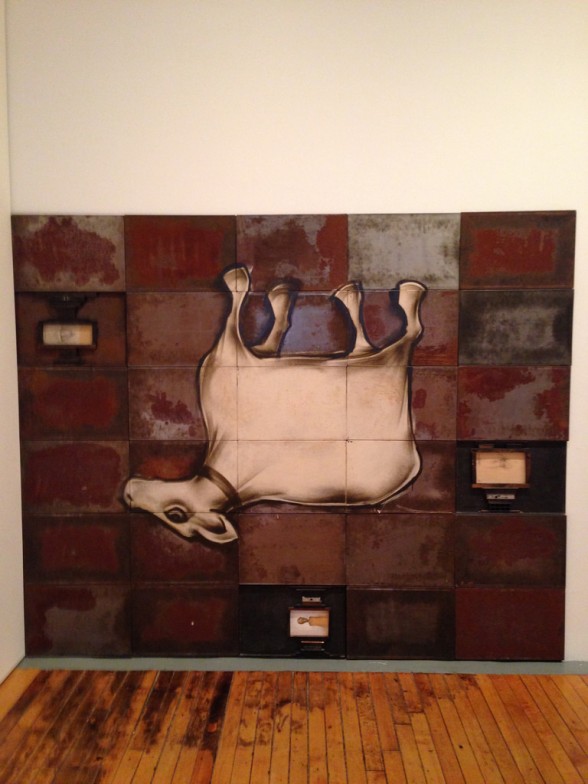
My favorite Barry McGee is the upside down cow on a grid of metal plates which seems both a distress call and, with its three small insertions of imagery under glass, a reliquary.
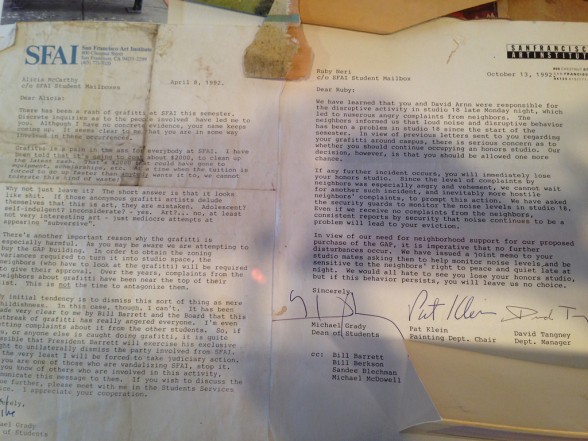
Don’t miss the vitrines which include some great things, including two letters from 1992 from the SFAI Dean of Students to Alicia McCarthy and Ruby Neri, who were students at the time, complaining of 1) graffiti at the school that they had obviously put there (“it looks like shit” and 2) disruptive activity in the studios late at night.
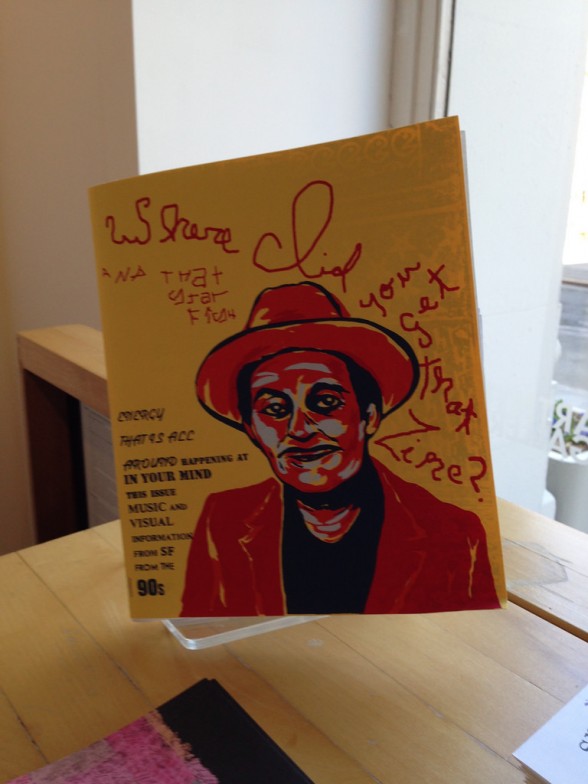
Also, the catalog, at $20 is a great carry away from the show. The essays and material from a panel discussion expand nicely on each of the artists and on the 1990s in San Francisco. There’s also a zine, for $20, which is a beautiful-looking, screen-printed affair.
Energy That is All Around, Grey Art Gallery, to July 12, 2014.
Zurcher Studio

Austin Lee, hot off his show at Postmasters, makes a great appearance in the Peter Saul-organized show at Zurcher Studio, If You’re Accidentally Not Included, Don’t Worry About It. Others in this blockbuster show include the organizer himself, Polly Apfelbaum, Brian Belott, Chuck Close, Taylor McKimmens, Hairy Who luminary Karl Wirsum and a host of others.
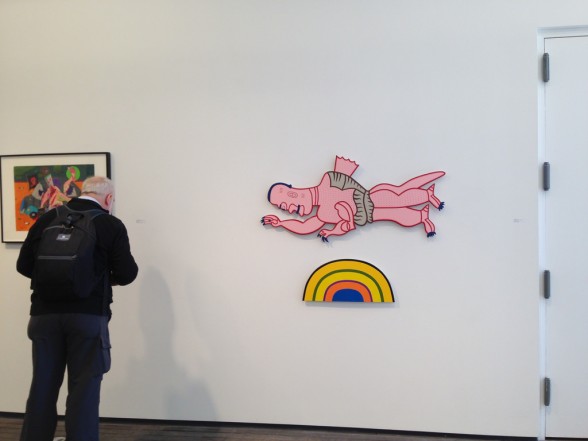
If the Mission School colors got you down, this show — filled with imagery, most of it hyperactive and comic — is a starburst, a neon rainbow a super hot lava lamp of excitement. Just go see it. It’s great. Or watch James Kalm’s nice, 14-minute video from the opening.
If You’re Accidently Not Included, Don’t Worry About It, Zurcher Studio, to May 3, 2014
Chelsea
Cate and I walked over to Chelsea via the Highline, which we had to elbow our way through, yikes, watch out for crowds on sunny Saturdays! On our way, we passed the building the houses a couple floors of Google staff. Who knew the Google giant had a foothold in New York?
Jerome Liebling’s retrospective Matter of Life and Death at Steven Kasher Gallery was a beautiful show of wonderful street portraits and city scenes by the photographer (1924-2011) who specialized in black and white and color shots of ordinary people. See 73 of the shows images at the link to the gallery’s website
Jerome Liebling at Steven Kasher Gallery, closed April 19.
Malick Sidibe’s works at Jack Shainman – vintage prints from the 60s-80s and new prints from 60s era negatives, show Sidibe working the club scene shortly after Mali’s independence in 1960. Wonderful captures of happy people in Western garb dancing the twist to Ray Charles tell the story of globalization already having an impact, for better or worse.
Malick Sidibe at Jack Shainman closed April 16.
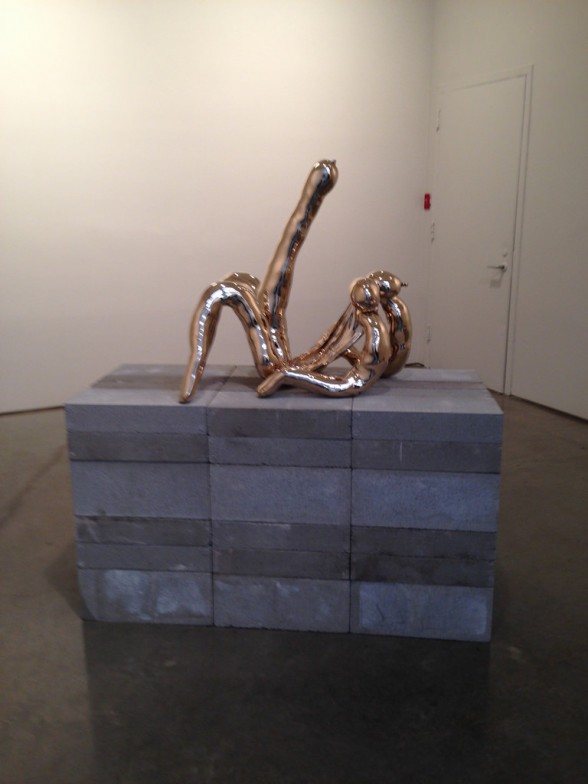
Sarah Lucas at Gladstone was one of our eye-rolling moments. The cast bronze objects are choose-your-own interpretation art pieces. Are they penises, are they vegetables? Who cares? The works take themselves rather seriously for objects that are at base silly doodles.
Sarah Lucas: Nud Nob closed April 26 at Gladstone.
Dominique Gonzalez-Foerster’s equinimod & costumes at 303 Gallery produced a definite depression in us as we sat on the “pouf” in the middle of the room and gazed at the artist’s clothes, displayed on the walls and on racks. We hoped that with the passage of some time we would “get” it but it seemed just so much clothing on the walls. Perhaps if the clothes had been draped on manikins as in a costume show at a museum, with some captivating story line, we would have liked it better. But all we could think was give me Charles LeDray, who makes the tiny garments he shows as his art. And those are full of conceptual underpinnings about labor, childhood, time, play and value. See show images at the gallery’s website.
Dominique Gonalez-Foerster euqinimod & costumes at 303 Gallery until May 31.
Todd Hido’s Silver Meadows at Bruce Silverstein are very large chromogenic prints of moody landscapes and buildings seen through a car window on a rainy day. Once you discover the drops of rain on the windshield and know that they are intended, the trick gets old. What’s pictured might not be interesting enough to sustain your attention outside the mediated rain that romanticizes and cinematizes what you’re looking at.
Todd Hido, Silver Meadows, closed now at Bruce Silverstein.
Uptown
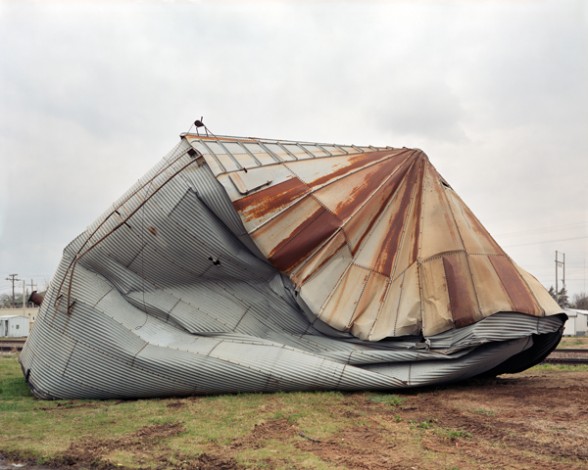
Unlike the shows we saw in Chelsea that were closing in a minute, we ran up to Richard Renaldi’s landscape show at Bonni Benrubi, which had just opened. This Grand Show is spare, with large works in glorious color of buildings, objects and some animals — all stand ins for humans, which are the artist’s true subject.

Renaldi’s landscape works have a soul-piercing loneliness about them. From the horses looking for shade in a wasteland surrounding a falling down house in Montana to the Smashed Silo in Electra Texas, the works exude abandonment and loss.
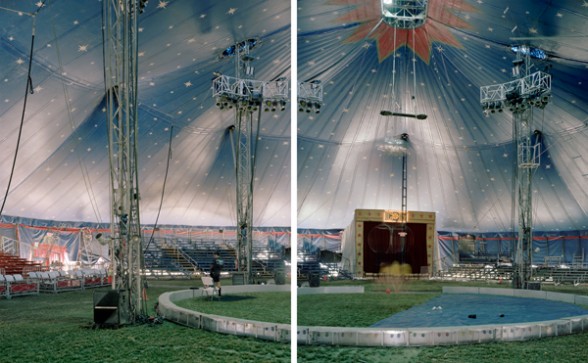
Best in the show is the diptych, The Big Top, Geneva, Ohio, in which the stars in the tent ceiling convey a child-like wonder at the design of the firmament. That it’s complete artifice is part of its charm and part of its poignance.
Richard Renaldi, The Grand Show, until June 7 at Bonni Benrubi gallery
And here’s the big news at the Morgan Library and Museum. They’ve decided to give their photo collections a curatorial voice. The 80-work exhibit, A Collective Invention: Photographs at Play, is the debut outing of their photographs and it’s lovely! And, just as the title says, it’s a playful romp through the some great, weird and iconic photos, with a leitmotif of a game running through it. Here’s the idea: Works placed next to each other have some kind of relationship — perhaps its color or maybe it’s the composition. You get to suss it out. We had a lot of fun, matching colors and motifs around the room, a highpoint being the photo of the Mount Rushmore monument being carved, with Abraham Lincoln behind the scaffolding paired with a German photo of a sexy blonde woman with come hither eyes being pasted onto the exterior of a building. You see her face through the scaffolding, as you saw Lincoln’s at Mount Rushmore. There’s a slide show of some of the images in show show at the Morgan’s website. But it doesn’t do the show justice, since it doesn’t give you the game-like property that makes this show memorable.
A Collective Invention: Photographs at Play, to May 18 at the Morgan Library and Museum.
Outtakes
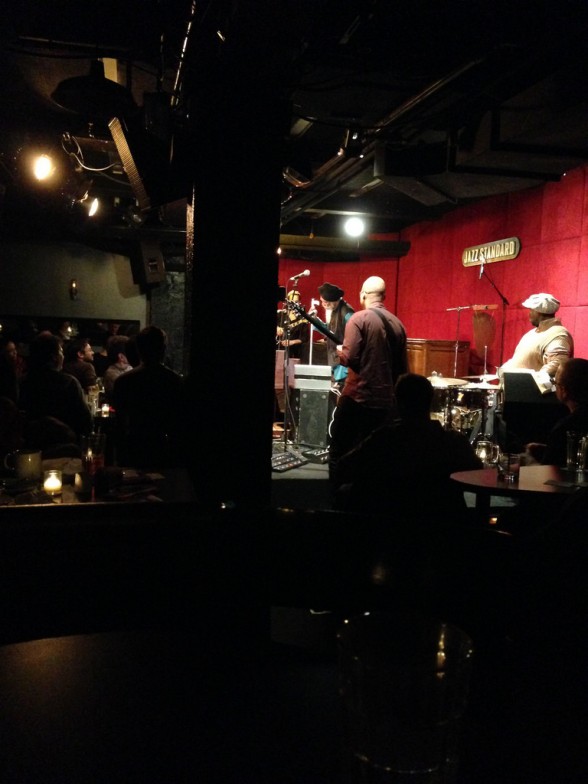
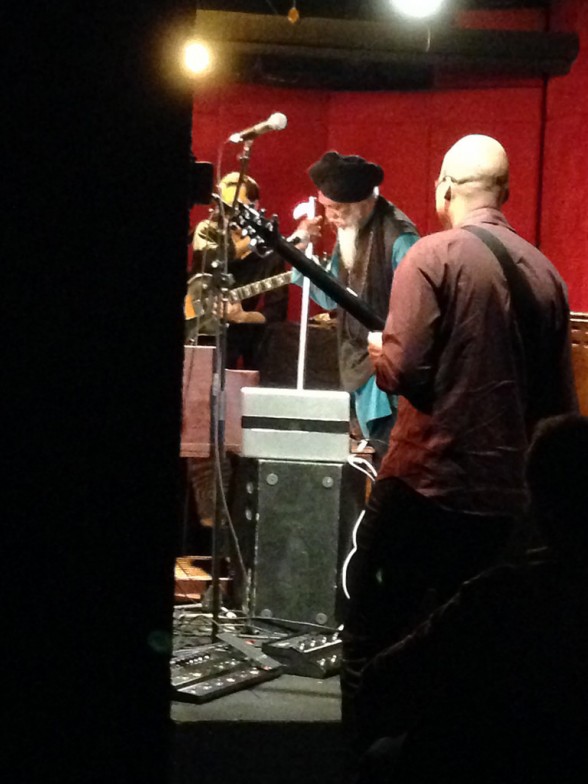
Our trip to the Jazz Standard was, as usual, wonderful. We heard Dr. Lonnie Smith Trio, and apart from the partly obstructed view we had a great time. The music is trippy-mesmerizing, percussive and melodic and Dr. Smith looked positively regal in his Sikh-esque garb. The video shows him playing with the same trio (I think) in 2013 at the Iowa City Jazz Festival. The first 5 minutes will give you a sense of the work. (the video is more than an hour long).
The Union Square Farmer’s Market is a big smile on a sunny Saturday. Here are my questions: Why are we fetishizing potato chips?
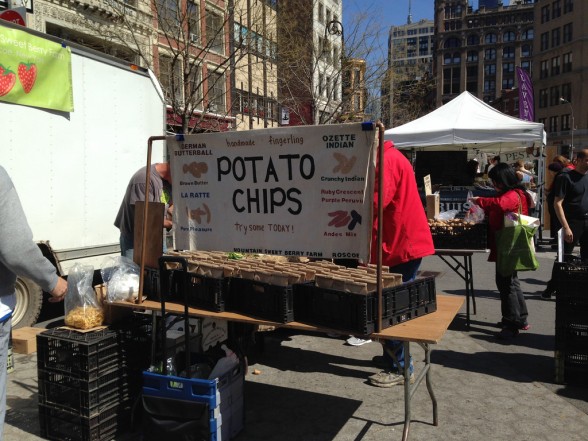
And how beautiful are radishes piled into a mini mountain? And why is this young lady asking for donations of shopping lists?
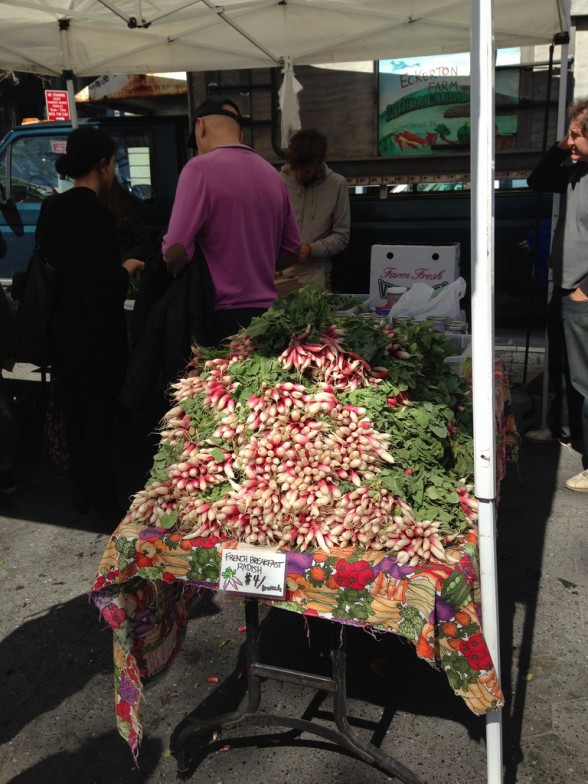
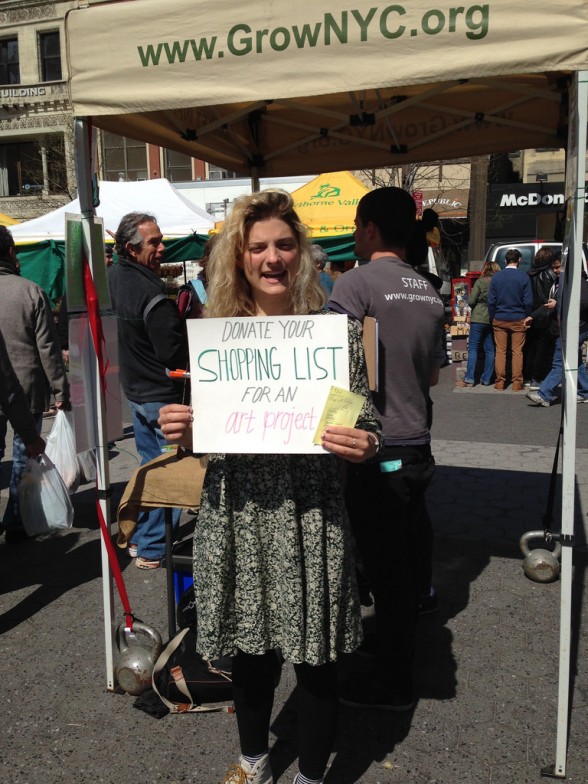
She told me she’s working with a Brazilian artist who will be having a show in Chelsea in the future and she will use the farmer’s market shopping lists in her show. So remember that when you’re shopping for radishes, potato chips and gluten free goodies. Bring a shopping list and find this young lady and be included in the Brazilian artist’s show. (If anyone has further information, please put it in the comments).
More photos at my Flickr set.



